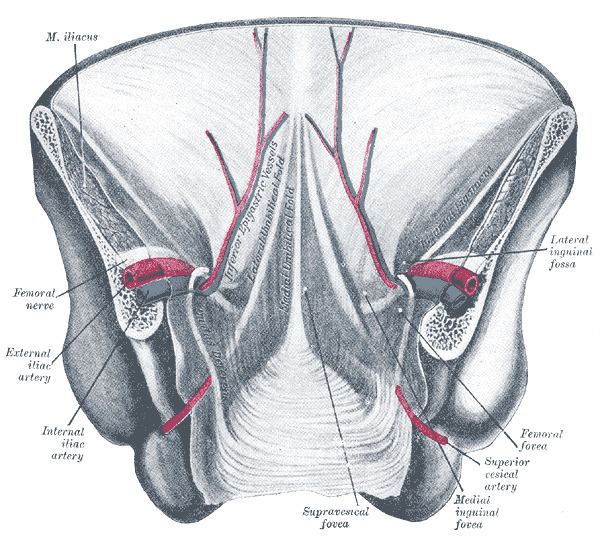Dorlands
/Elsevier l_09/12493508 FMA 16568 | TA A08.3.01.007 | |
 | ||
Latin Ligamentum umbilicale medianum,
ligamentum suspensorium vesicae urinariae | ||
The median umbilical ligament is a structure in human anatomy. It is a shrivelled piece of tissue that represents the remnant of the embryonic urachus.
It extends from the apex of the bladder to the umbilicus, on the deep surface of the anterior abdominal wall. It is unpaired.
It is covered by the median umbilical fold
Lateral to this structure are the medial umbilical ligament (which is a different structure, not to be confused) and the lateral umbilical ligament.
Significance
It may be used as a landmark for surgeons who are performing laparoscopy, such as laparoscopic inguinal hernia repair. Other than this, it has no function in a born human and may be cut or removed with impunity.
References
Median umbilical ligament Wikipedia(Text) CC BY-SA
